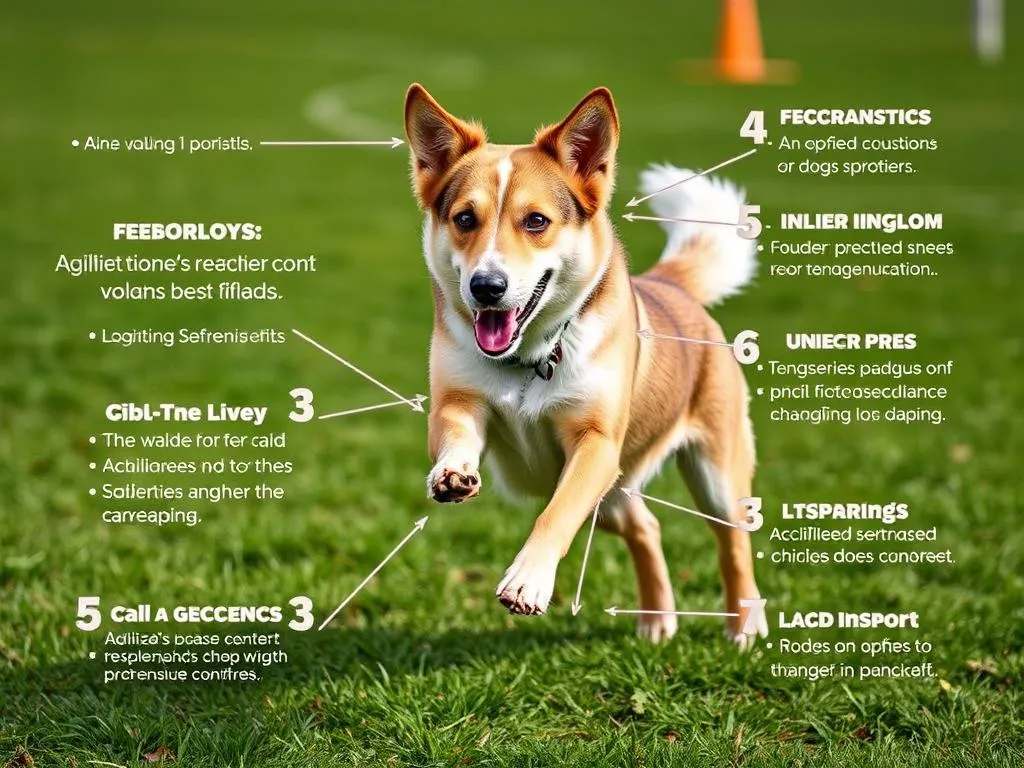
Agility training has become a popular and engaging way for dog owners to connect with their pets while promoting physical fitness and mental wellness for both. This dynamic sport involves dogs navigating through a course filled with obstacles like jumps, tunnels, and weave poles, all under the guidance of their handler. The appeal of agility training goes beyond just the fun of the activity; it offers a multitude of benefits that enhance the lives of both dogs and humans. Did you know that participating in agility training can significantly improve a dog’s overall behavior and well-being? In this article, we’ll explore the benefits of agility training for dogs and humans in detail, providing insights that can help you decide if this is the right pursuit for you and your furry friend.
Understanding Agility Training
What is Agility Training?
Agility training originated in the late 1970s in the United Kingdom as a way to provide a fun and engaging competition for dogs. Initially inspired by equestrian jumping events, agility quickly evolved into a distinct sport that showcases a dog’s speed, accuracy, and the bond between the dog and handler. Typically, an agility course consists of various obstacles, including jumps, tunnels, and weave poles, which dogs must navigate as quickly and accurately as possible.
The Fundamentals of Agility Training
At its core, agility training emphasizes teamwork and communication between the dog and handler. Basic principles include teaching the dog to follow commands and cues, as well as developing the handler’s skills in directing the dog through the course. This teamwork is essential for successfully completing agility courses, making it a rewarding experience for both parties involved.
Different Forms of Agility Training
Agility can be enjoyed in two main forms: competitive and recreational. Competitive agility involves participating in events where dogs are timed as they navigate courses, often leading to titles and awards. On the other hand, recreational agility focuses on the enjoyment of the activity itself, allowing dog owners to bond with their pets without the pressure of competition. Training methods also vary, with formal classes available as well as DIY options that allow owners to create their own training setups at home.
Benefits of Agility Training for Dogs
Physical Benefits
One of the most significant benefits of agility training for dogs is improved physical fitness. As dogs navigate through various obstacles, they enhance their cardiovascular health, strength, and endurance. The sport also improves coordination and balance, as dogs learn to navigate different surfaces and make quick turns. This increased physical activity can lead to a healthier, happier dog overall.
Mental Stimulation
Agility training is not just about physical exercise; it also serves as a form of mental stimulation. Dogs are naturally curious creatures, and agility courses challenge them to think critically and problem-solve as they navigate through obstacles. This mental engagement helps prevent boredom, which can often lead to behavioral issues like excessive barking or destructive chewing. By keeping their minds active, dogs are less likely to exhibit these unwanted behaviors.
Behavioral Improvements
Participating in agility training can lead to significant behavioral improvements in dogs. As they learn to respond to commands and navigate courses, dogs become more obedient and responsive to their handlers. Furthermore, agility training can help reduce anxiety and fear-based behaviors, as the structured environment provides consistency and predictability, fostering a sense of security for the dog.
Strengthened Bond with Owners
Agility training fosters a strong bond between dogs and their owners through teamwork and communication. As handlers guide their dogs through courses, they develop a deeper understanding of their dog’s abilities and needs. Positive reinforcement techniques, such as treats and praise, further enhance this bond, creating a trusting relationship that can translate to improved behavior in other areas of life.
Benefits of Agility Training for Humans
Physical Health Benefits
The benefits of agility training for humans are equally impressive. Engaging in agility training provides cardiovascular benefits as handlers actively participate in the training process. Running alongside their dogs, handlers experience improved endurance and overall physical fitness. Additionally, the physical demands of the sport can aid in weight management, making it a great option for those looking to maintain a healthy lifestyle.
Mental and Emotional Well-being
Agility training serves as an excellent outlet for stress relief and can significantly boost mood. The combination of physical activity and the joy of spending time with a beloved pet can lead to improved mental health. Furthermore, participating in agility training groups fosters social interaction and community engagement, as dog owners bond over shared experiences and challenges.
Skill Development
Handling an agility course requires the development of various skills, including timing, coordination, and understanding canine behavior. As handlers learn to navigate courses and communicate effectively with their dogs, they gain valuable insights into dog training principles. This knowledge can improve overall handling skills, benefiting both the handler and the dog in various situations.
Getting Started with Agility Training
Assessing Readiness
Before diving into agility training, it’s crucial to assess whether your dog is ready for the challenge. Consider factors such as age, breed, and overall health. Younger dogs may require foundational training before tackling agility courses, while older dogs may benefit from agility training as a form of exercise and mental stimulation.
Finding the Right Training Program
There are numerous options available for agility training, ranging from local classes to online resources. When looking for a program, consider your dog’s skill level, your goals, and the style of training that best suits you both. It may also be helpful to observe a few classes before committing to find the right instructor or training group.
Essential Equipment for Beginners
Starting agility training doesn’t have to break the bank. While professional training setups can be quite elaborate, beginners can create a simple training area at home with basic equipment. Essential items include jumps (which can be made from PVC pipes), tunnels (which can be purchased or made from flexible fabric), and weave poles (which can be created using simple garden stakes). DIY options are budget-friendly and can be customized for your dog’s needs.
Tips for Successful Agility Training
Creating a Positive Training Environment
To maximize the effectiveness of your agility training, it’s essential to create a positive environment. Using positive reinforcement techniques such as treats, praise, and playtime encourages your dog to enjoy the training process. Patience is key—both dogs and handlers may encounter challenges along the way, so maintaining a supportive attitude is vital to success.
Setting Realistic Goals
Setting achievable goals for both you and your dog is crucial to maintaining motivation and celebrating progress. Start with simple tasks, gradually increasing the complexity of the obstacles as your dog gains confidence and skill. Tracking progress and celebrating milestones, no matter how small, can foster a sense of accomplishment and encourage continued participation.
Overcoming Challenges
Challenges are a natural part of the agility training journey. Some common obstacles include fear of certain equipment or difficulty following commands. Address these challenges with consistency and adaptability, adjusting your approach as necessary. Remember to keep training sessions fun and engaging to maintain enthusiasm for both you and your dog.
Conclusion
Engaging in agility training offers a multitude of benefits for dogs and humans alike. From improved physical fitness and mental stimulation for dogs to enhanced physical health and emotional well-being for handlers, the advantages of this sport are profound. Additionally, the bond created through teamwork and communication strengthens relationships, making agility training a rewarding experience. Whether you are looking for a new way to connect with your dog or seeking a fun and active hobby, agility training is an excellent choice that promises joy and fulfillment for both you and your furry companion.









